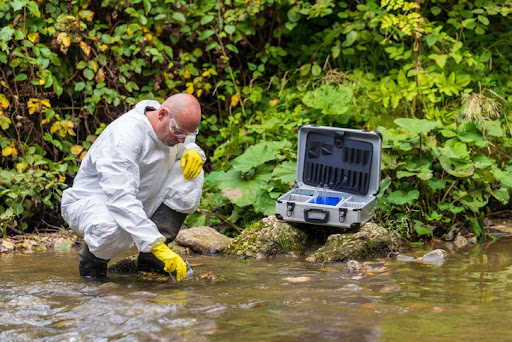Maintaining a septic system is crucial to avoid costly repairs and ensure a long, reliable lifespan from your wastewater treatment system. The two main preventative septic services include septic inspections and septic pump-outs. Learn the difference between the two and how to tell when you need each one.
Septic Inspections
A septic inspection involves evaluating a septic system to determine its condition. Inspections should be conducted by a licensed professional with the expertise and equipment necessary to assess the septic tank, pipes, drain field, pumps, and other mechanical parts.
The primary purpose of a septic inspection is to identify any issues before they become serious problems. The inspector looks for signs of damage or wear and tear, such as cracks or leaks in the tank or pipes. They also check the drain field to ensure it’s absorbing wastewater properly and not becoming clogged with solids or other debris.
During a septic inspection, the technician begins by reviewing the system’s repair and maintenance history. They may also ask about your water usage habits and any changes since your last inspection, such as increased household occupants.
After this initial phase, the inspector conducts a visual examination. They may also use specialized equipment, such as a fiber-optic camera, to inspect components in hard-to-reach areas.
Once complete, the technician leaves you with a report detailing their findings and any recommended repairs or maintenance. Heed the information in this report to keep your septic system functioning properly and prevent costly repairs down the road.
A septic inspection is typically recommended every three years to determine if it’s time for septic pumping or if you can wait another year or two for this service. You should also schedule an inspection if you’re buying or selling a house with a septic system, or if you start noticing plumbing problems, such as slow drains, gurgling sounds, or foul odors.
Septic Pump-Outs
A septic pump-out involves removing the solid waste and sludge that accumulates in the septic tank over time. This service maintains the proper functioning of your septic system, as a full tank can lead to backups and other issues.
During a septic pump-out, the technician uses a hose to pump waste from the tank into a vacuum truck. Then, they hose down the tank to remove any remaining debris or build-up. Finally, the team disposes of waste material in an approved location, such as a wastewater treatment plant.
The Environmental Protection Agency (EPA) recommends pumping your septic tank every three to five years, depending on the size of the tank and the amount of use it receives. More frequent pump-outs may be needed if the system sees heavy use. Scheduling an inspection first helps you know when it’s time to pump the tank.
Trinity Liquid Waste offers professional septic inspections and pump-outs to keep your wastewater treatment system flowing smoothly. Our team of licensed professionals has over 25 years of experience serving residential and commercial customers in the San Francisco Bay Area. Rest assured that we have the necessary tools and expertise to assess your system, keep it functioning reliably, and extend its lifespan. Don’t wait for a septic system emergency—call us at 510-874-6489 or contact us online to request a septic inspection or pump-out today.

